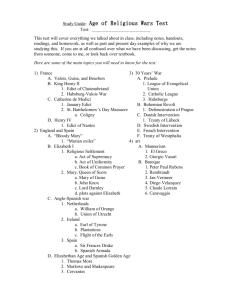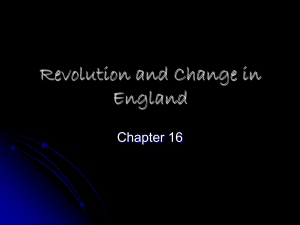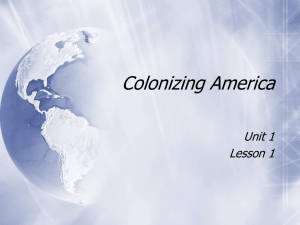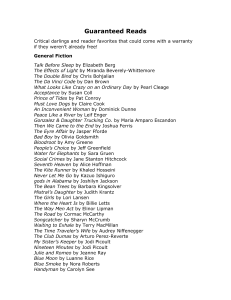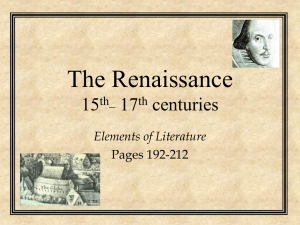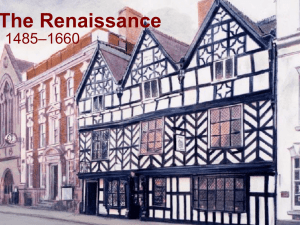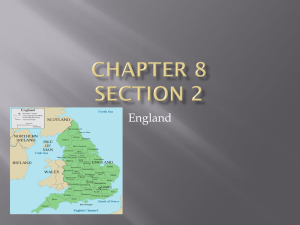Monarchs of Europe
advertisement
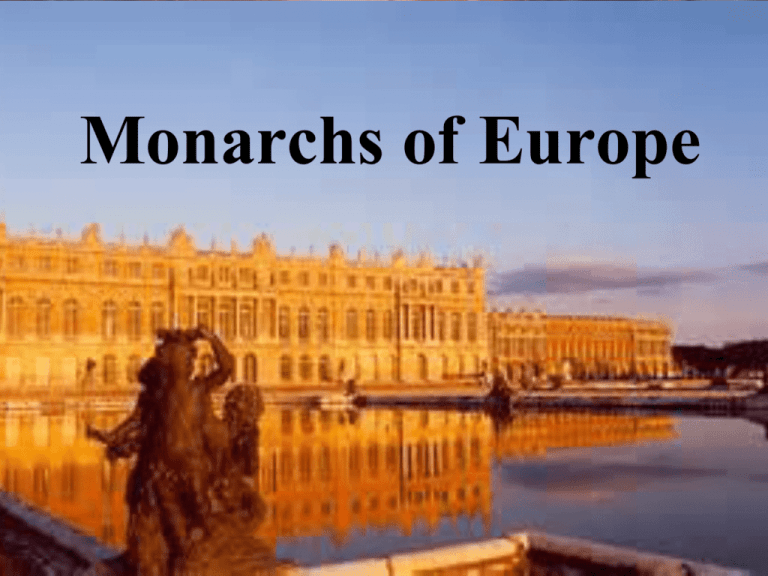
Monarchs of Europe I. FRANCE • Henry IV – Ushered in the “House of Bourbons” – Issued the Edict of Nantes • Protected freedom of religion – Could not solve tax problem – Murdered in 1610 • Cardinal Richelieu – Chief minister under Louis XIII – Worked to reduce strength of nobles and to reform the economy • The Thirty Years’ War – Protestant rebellion against Holy Roman Empire – Ended with Treaty of Westphalia in 1648 • Gave independence to Netherlands, Germany, and Switzerland • Overall it weakened the Holy Roman Empire The Sun King • Louis XIV became king of France – 72 years reign – Ruled during French Exploration of New World – Believed in divine right of king • Said, “I am the state” • Versailles – Expense of palace strained the French economy • Domestic and economic policies – Absolute power for king – Reformed tax system – Leading naval power • Louis XIV’s legacy – France became a leading European power • Caused destruction • Loss of life and resources • Loss of territory II. RUSSIA • Isolation – Asian influence (Mongols) – Religious differences • Eastern Orthodox vs. Roman Catholic or Protestantism – Geographically separated from Europe – Michael Romanov united Russia Peter the Great • Westernizing Russia – Improved training and weaponry – Western architecture – Modernization in society Catherine the Great • Catherine’s policies – Domestic policies were meaningless or harmful to most Russians – Foreign policies won new territory and extended the Russian empire • Poland – Russia split Poland with Prussia and Austria • Expansion eastward – Siberia and Alaska III. CENTRAL EUROPE • Habsburgs – Maria Theresa • Pragmatic Sanction allowed her to inherit all Habsburg lands • Frederick William I – Sought to make Prussia a great power – Efficient system of government • Moved away from French influence • Cut lavish spending • Frederick the Great – Highly intelligent – Expanded territory and prestige Conflict Between Prussia and Austria • The Diplomatic Revolution – Reversal of alliances resulted in France and Austria opposing Prussia and Great Britain • The Seven Years’ War – 1756 to 1763 – Began in North America as the French and Indian War • The years of peace – European powers reluctant to fight again – Rebuilt and strengthened kingdoms at home IV. ENGLAND • House of Tudor – Henry VII was the first Tudor to rule – Henry VIII followed and established a new religion • Anglican Church – Married 6 times, had 3 children • Edward VI – Youngest of Henry’s offspring, but only male heir – Took power at age of 9 – Though young, was responsible for many reforms in the Anglican Church – Chronic health problems, fell ill & died at 15 – Named his Protestant cousin, Jane Grey, as his successor • Mary I – Eldest of Henry VIII’s children – Daughter of Catherine of Aragon, Henry’s 1st wife • Spanish princess, devout Catholic – Had Jane Grey beheaded & claimed power – Mary I married Philip II of Spain – Persecuted Protestant clergy – Failed because persecutions were too extreme – “Bloody Mary” Elizabeth I • Elizabeth and Mary Queen of Scots – Mary plotted to kill Elizabeth • Catholics again attempting to end Anglican rule – Elizabeth had Mary beheaded • The Spanish Armada – English ships defeated “Invincible Armada” – English had smaller faster ships • Religious problems – Puritans wanted to rid church of all Catholic practices – Tudors persecuted non-Anglicans • Relations with Parliament – Parliament challenged royal power – Elizabeth managed them skillfully English Parliament (congress) • House of Lords – Made up of nobles and clergy – Born into position • House of Commons – Made up of gentry and burgesses – Gentry were landowners with no formal titles – Burgesses were merchants and professional people James I • Son of Mary Queen of Scots (Stuart Family) – Ruled England and Scotland • Strong supporter of Anglican Church • King James Version of Bible • Lacked economic and diplomatic skill • Believed in divine right of kings, did not like sharing power with Parliament
